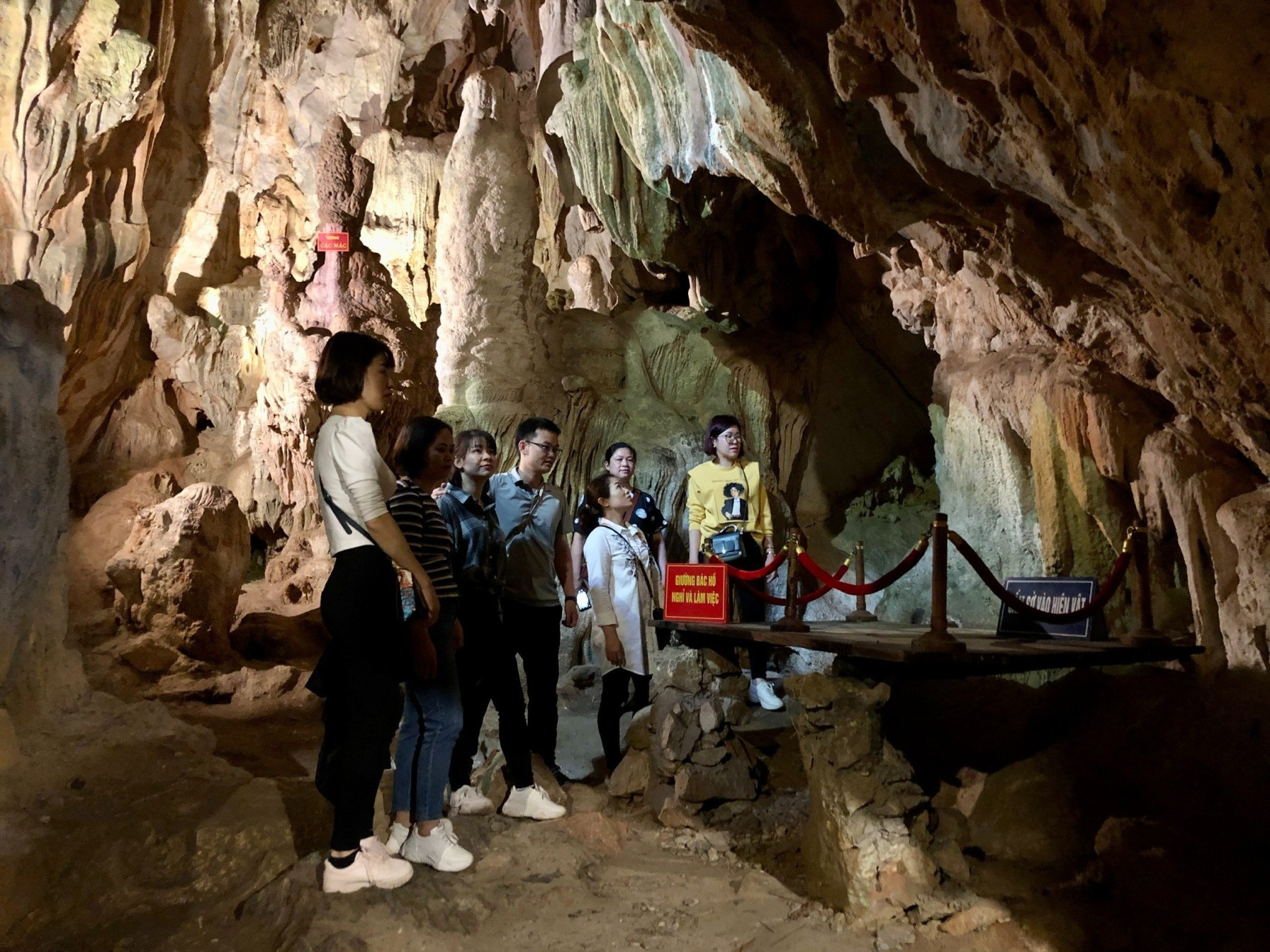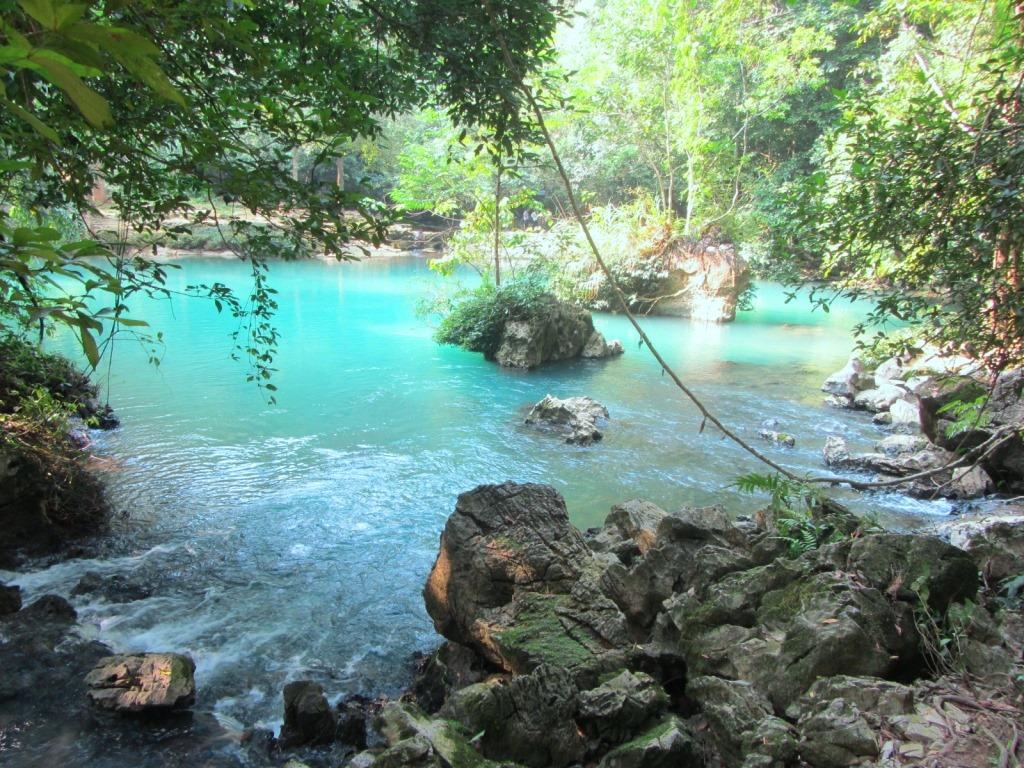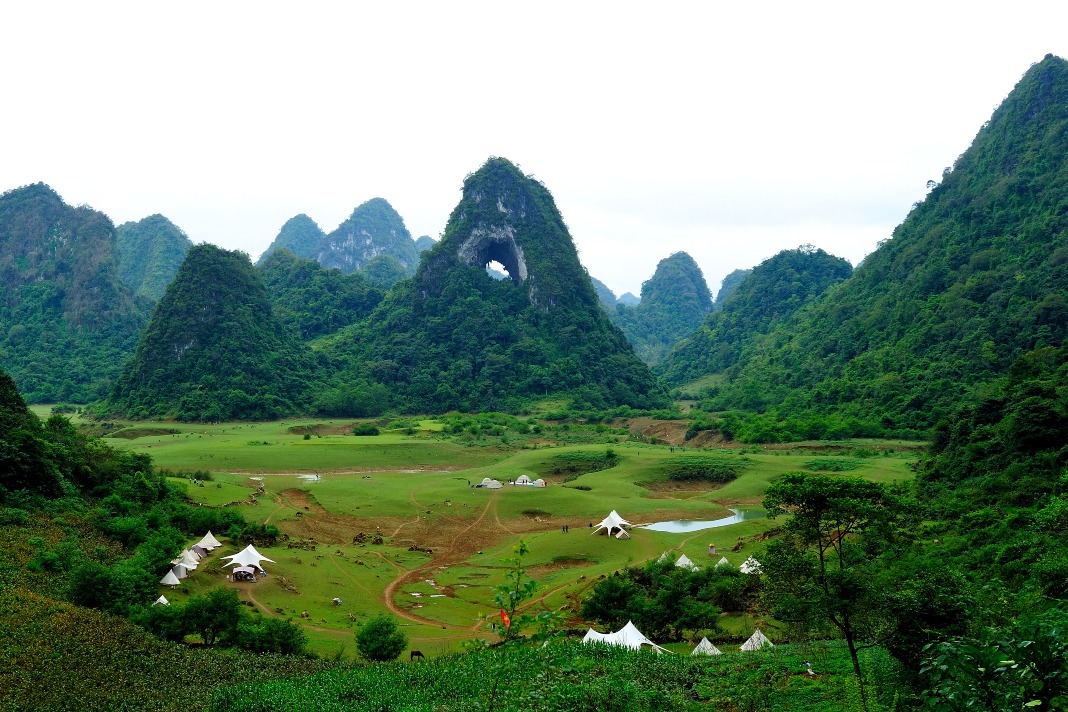Introduction to Pac Bo Cave

Nestled in the rugged mountains of Cao Bang province, Pac Bo Cave stands as one of Vietnam’s most revered historical sites. This unassuming limestone grotto served as the clandestine headquarters of Ho Chi Minh upon his return to Vietnam in 1941 after three decades abroad. Here, in this remote frontier near the Chinese border, “Uncle Ho” laid the groundwork for Vietnam’s independence movement, making Pac Bo Cave a pilgrimage site for those seeking to understand the nation’s revolutionary spirit.
Beyond its historical weight, Pac Bo Cave captivates visitors with its serene natural beauty. The site encompasses not just the cave itself but also the crystal-clear Lenin Stream, the towering Karl Marx Mountain, and lush forests that once sheltered revolutionaries. Recognized as a Special National Relic, Pac Bo Cave offers a profound blend of history and natural wonder that continues to inspire Vietnamese patriots and international visitors alike.
History and significance of Pac Bo Cave 1. History of Pac Bo Cave
The year 1941 marked Vietnam’s turning point when Ho Chi Minh slipped across the Chinese border after thirty years of exile. He chose Pac Bo Cave carefully – remote enough to avoid detection yet close enough to the border for quick movement. For four years, this damp cavern served as both home and headquarters for Vietnam’s independence movement.
Inside the cave’s cramped space, history was written by oil lamp light. Ho Chi Minh used a flat stone as his desk, drafting political documents that would shape Vietnam’s future. He slept on a simple wooden plank bed, surviving on foraged food while building the revolutionary network that would ultimately defeat colonial powers. The cave’s walls absorbed his quiet determination, his whispered strategies, and his unshakable belief in Vietnam’s freedom.
2. Significance of Pac Bo Cave
Pac Bo Cave witnessed the creation of the Viet Minh resistance movement that united Vietnam’s fight for independence. Here, Ho Chi Minh translated revolutionary texts and trained young cadres who would carry the struggle forward. The surrounding landscape became part of the revolution too – the nearby stream was renamed after Lenin, while the towering peak became Karl Marx Mountain, turning geography into ideology. Today, visitors can still see the actual revolutionary writing table, the oil lamp, and other artifacts preserved exactly as Ho Chi Minh left them.
Guide to Pac Bo Cave
Reaching this sacred site requires journeying through Cao Bang’s spectacular mountain scenery. From Hanoi, travelers can take a six to eight-hour bus ride or private car along winding roads that climb through tea plantations and ethnic minority villages. Currently, there are many options for transportation to Cao Bang, and passenger vans are the most popular choice. Passenger vans depart from My Dinh, Gia Lam, or Nuoc Ngam bus stations, travel time is about 6-8 hours, with many types of cabins or sleeper buses, seat buses, etc. If you choose to travel to Cao Bang by car, taxi, or private car, you follow Highway 3 through Thai Nguyen, Bac Kan, and then to Cao Bang.The final approach to Pac Bo winds through dramatic karst formations, with each turn revealing more breathtaking views.
Currently, there are many options for transportation to Cao Bang, and passenger vans are the most popular choice. Passenger vans depart from My Dinh, Gia Lam, or Nuoc Ngam bus stations, travel time is about 6-8 hours, with many types of cabins or sleeper buses, seat buses, etc. If you choose to travel to Cao Bang by car, taxi, or private car, you follow Highway 3 through Thai Nguyen, Bac Kan, and then to Cao Bang.The final approach to Pac Bo winds through dramatic karst formations, with each turn revealing more breathtaking views.When is the best time to visit Pac Bo Cave?
Pac Bo Cave welcomes visitors year-round, but each season paints the landscape differently. The rainy season from June to October transforms the Lenin Stream into a rushing torrent, its waters pounding over boulders with revolutionary fervor. Come November through May, drier weather reveals the stream’s glassy surface, perfectly reflecting the surrounding mountains like a polished mirror.
Early mornings bring mist that swirls through the valley like ghosts of revolutionaries past, while afternoons light the cave mouth with golden sunshine. No matter when you come, the air carries the crisp freshness of mountain breezes mingled with the earthy scent of history.
Notable attractions in Pac Bo Cave
1. Pac Bo Cave -Ho Chi Minh’s Hideout
Entering the cave’s narrow mouth feels like crossing into another era. The temperature drops immediately, the cool air heavy with the weight of history. Inside, the uneven floor and low ceiling remind visitors of the challenging conditions Ho Chi Minh endured. The revolutionary writing table still sits where he left it, its smooth surface bearing silent witness to the birth of a nation’s dreams.
Guides share stories of how Ho Chi Minh would work late into the night by flickering lamplight, his shadow dancing across the rough cave walls. They point out the exact spot where he slept, a simple wooden platform that seems impossibly small for such giant dreams. The cave’s atmosphere humbles visitors, making abstract history suddenly personal and real.
2. Lenin Stream and Karl Marx Mountain

Just steps from the cave, the Lenin Stream flows with liquid clarity over rounded stones. Ho Chi Minh named this waterway after the revolutionary leader he admired, transforming a simple mountain stream into a symbol of resistance. Visitors often pause here to dip their hands in the cool water, connecting physically with history.
Across the stream, Karl Marx Mountain rises sharply, its forested slopes standing guard over the historic site. The mountain’s new name replaced its local moniker, showing how revolution reshaped even the landscape. On clear days, sunlight dances on the stream’s surface while the mountain watches silently, just as it did during those fateful years.
3. Landmark 108 of the sacred border mark
A short walk from the cave complex stands a simple stone pillar marking the border between Vietnam and China. This unassuming marker carries deep significance, representing the frontier Ho Chi Minh crossed to bring freedom home. Visitors often reflect here on how borders can separate lands but never ideas, how one man’s journey from exile changed an entire nation’s destiny.4. Pac Bo Historical Site
The onsite museum preserves precious artifacts from the revolutionary period with quiet dignity. Ho Chi Minh’s personal belongings appear startlingly simple – a worn pair of sandals, a patched jacket, a bamboo writing set. These ordinary objects tell an extraordinary story of sacrifice and vision.
Detailed exhibits explain how messages were secretly carried through the mountains, how revolutionary literature was printed and distributed, and how the independence movement grew from this remote cave into a nationwide force. The museum doesn’t glorify war but rather honors the profound belief in freedom that sustained the struggle.
5. Road to Pac Bo Cave – The road blends with nature
Beyond the historic sites, walking paths wind through landscapes of breathtaking beauty. The same forests that once hid revolutionaries now shelter rare birds and wild orchids. Following these trails, visitors discover hidden waterfalls cascading over mossy rocks and quiet pools perfect for reflection.
The most rewarding hike climbs to a viewpoint overlooking the entire valley. From this vantage, the Lenin Stream appears as a silver thread stitching together cave, mountain, and border – the physical elements of Vietnam’s independence story laid out below like a living map.
Things to note when coming to Pac Bo Cave
Visiting Pac Bo Cave requires both practical preparation and respectful awareness. Comfortable walking shoes are essential for navigating the uneven paths and stone steps. The mountain weather changes quickly, so carrying layers ensures comfort when temperatures shift.
As a sacred historical site, Pac Bo calls for quiet contemplation rather than loud conversation. Visitors should dress modestly, avoiding shorts or sleeveless tops to honor the site’s significance. Photography is permitted, but always with respect – this isn’t just a tourist attraction but a place where a nation’s destiny was shaped.
Bringing water and snacks is wise, as services are limited, but all trash must be carried out to preserve the pristine environment. Most importantly, come ready to listen to the guides’ stories, to the whisper of the Lenin Stream, and to the echoes of history that still resonate in these mountains.
Conclusion: Why Pac Bo Cave Matters
Pac Bo Cave stands as physical proof that great change often begins in small, hidden places. This unassuming grotto nurtured ideas that would eventually shake an empire, proving that vision and determination can outweigh brute force. The cave’s power lies in its simplicity – no grand monuments, just authentic preservation of where and how history unfolded.
Coming here connects visitors to Vietnam’s revolutionary spirit in a way no textbook can. To stand where Ho Chi Minh stood, to see the actual desk where independence was planned, to touch the same stream waters that sustained revolutionaries – these experiences make history tangible.
 If you’d like to experience Cao Bang not just as a visitor but as a welcomed guest, consider booking a Cao Bang tour with YESD. Our local guides were born and raised here. They know the hidden corners, the legends that never made it into textbooks, and they’re eager to shape a journey that fits your pace and interests — whether it’s more history, more nature, or a bit of both.
If you’d like to experience Cao Bang not just as a visitor but as a welcomed guest, consider booking a Cao Bang tour with YESD. Our local guides were born and raised here. They know the hidden corners, the legends that never made it into textbooks, and they’re eager to shape a journey that fits your pace and interests — whether it’s more history, more nature, or a bit of both.